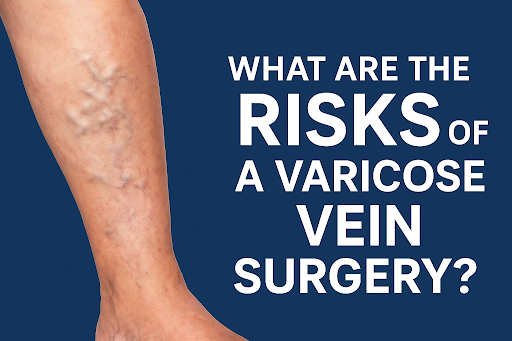The inability to fully extend or straighten the knee is not only a source of discomfort but also a symptom that may point to underlying health issues, ranging from minor injuries to more serious conditions. This article delves into the hidden consequences and potential causes behind this seemingly straightforward problem, highlighting the importance of not dismissing it as a mere inconvenience.
Understanding the Knee Joint
The knee is a complex joint that bears a significant portion of the body’s weight. It comprises bones, cartilage, ligaments, and tendons working in harmony to enable a wide range of movements. When any of these components are compromised, the functionality of the knee, including its ability to straighten fully, can be affected.
Common Causes
Injuries and Trauma
Injuries such as anterior cruciate ligament (ACL) tears, meniscus tears, or fractures can prevent the knee from straightening. These injuries can cause internal swelling, pain, and mechanical blockage, making it difficult to achieve full extension.
Arthritis
Osteoarthritis, a condition characterized by the wear and tear of cartilage, can lead to stiffness and swelling in the knee, limiting its range of motion. Rheumatoid arthritis, an autoimmune disorder, can also cause inflammation and thickening of the joint capsule, hindering knee extension.
Patellar Conditions
Conditions affecting the patella (kneecap), such as patellar tendinitis or patellofemoral pain syndrome, can cause pain that worsens with movement, including extending the knee.
Baker’s Cyst
A Baker’s cyst, a fluid-filled swelling behind the knee, can create pressure and restrict knee movement, making straightening the knee uncomfortable or impossible.
Hidden Consequences
The inability to straighten the knee fully can lead to a cascade of health issues beyond the initial discomfort. Here are a few potential consequences.
Altered Gait and Posture
When you can’t straighten your knee fully, your body instinctively tries to minimize discomfort by adjusting how you walk and stand. This adaptation, though natural, can have detrimental effects:
- Compensation Mechanics: The body’s attempt to avoid pain leads to an uneven distribution of weight, placing undue stress on the unaffected leg or other body parts. Over time, this compensatory mechanism can strain muscles and joints not designed to bear the extra load.
- Secondary Injuries: Altered gait can contribute to overuse injuries in the hips, ankles, and even the lower back. Conditions such as hip bursitis, ankle sprains, and lumbar spine disorders may arise as direct consequences of compensatory changes in walking or standing.
- Long-term Postural Changes: Persistent gait alterations can lead to long-term postural changes, potentially resulting in chronic conditions like scoliosis (curvature of the spine) or persistent lower back pain, as the body’s musculoskeletal structure adapts to the imbalance.
Muscle Weakness and Atrophy
The knee’s inability to straighten not only affects joint movement but also impacts the surrounding musculature:
- Reduced Muscle Activation: Restricted knee movement means certain muscles are not fully engaged or activated during everyday activities. Over time, this lack of use leads to a decrease in muscle strength and endurance.
- Muscle Atrophy: Prolonged inactivity or reduced movement can cause muscles around the knee to atrophy, or waste away. This process exacerbates the weakness, making recovery and rehabilitation more challenging. Muscle atrophy further limits mobility and increases the risk of injury upon return to normal activity.
- Compounded Mobility Issues: Weakness and atrophy around the knee can lead to a vicious cycle of decreased mobility. As the muscles become less capable of supporting the knee, the joint itself becomes more vulnerable to injury and degeneration, perpetuating the cycle of pain and dysfunction.
Chronic Pain and Disability
The long-term implications of untreated knee issues can extend far beyond temporary discomfort or inconvenience:
- Transition to Chronic Pain: Acute knee problems can evolve into chronic pain conditions if not properly treated. Chronic pain is not only difficult to manage but also impacts emotional and mental well-being, contributing to a diminished quality of life.
- Development of Disability: In severe cases, the accumulation of issues—ranging from altered gait and posture to muscle weakness and chronic pain—can lead to disability. This may manifest as an inability to perform daily activities, decreased independence, and the need for assistive devices or long-term care.
- Lifestyle Limitations: The repercussions of untreated knee conditions can significantly restrict an individual’s lifestyle, limiting participation in recreational activities, sports, and even affecting career choices or employment options.
The Path Forward
Addressing the inability to straighten the knee begins with a thorough medical evaluation to diagnose the underlying cause. Treatment may involve rest, physical therapy, medication to reduce inflammation, or surgery in severe cases. Early intervention is key to preventing the progression of symptoms and avoiding the hidden consequences associated with this condition.
Conclusion
The inability to straighten the knee is more than just a temporary inconvenience; it’s a sign that something deeper may be amiss. Understanding the potential causes and consequences can motivate individuals to seek prompt medical attention, ensuring that they can return to their normal activities without long-term impact on their health.








